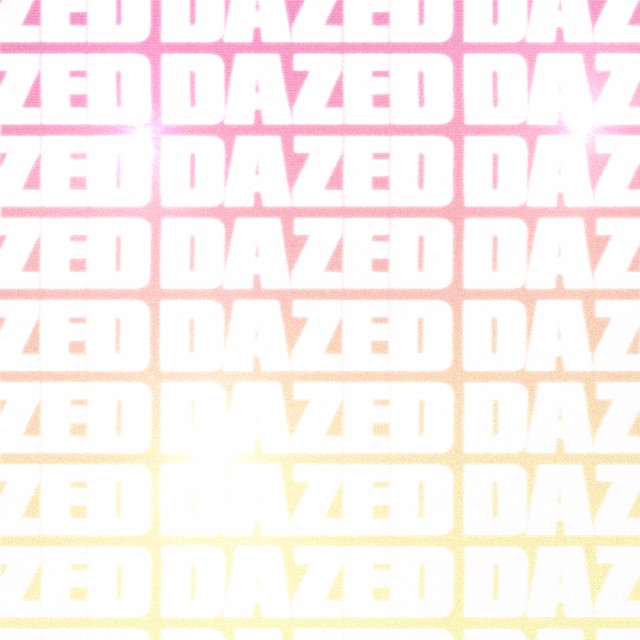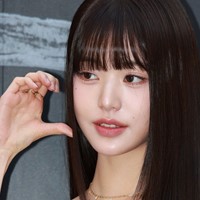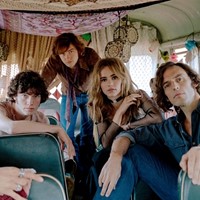As Gucci releases its Memoire d’un odeur campaign, featuring a cast of older faces, we examine the beauty industry’s move towards age-inclusivity
Today Gucci launched the campaign for its genderless fragrance Memoire d’un odeur. Fronted by none other than fashion muse Harry Styles, it features everything you’d expect from a millennial-savvy luxury perfume ad in 2019: a fresh-faced, diverse cast that includes gender-neutral model Leslie Winer, hot new designer Harris Reed, LA-based dreamscape painter Ariana Papademetropoulos, and self-confessed leather daddy Zumi Roscow. But it also (and this is important) stars 76-year-old actor Stanislas Klossowski Da Rola and silver-haired siren Olimpia Dior. So, is the beauty industry finally addressing its problem with age?
We’ve already seen the shift towards age-inclusivity in fashion with the likes of literary icon Joan Didion, whose enduring appeal and magnetic froideur seems to be anything but limited by age, fronting Celine’s campaign in 2015, and 70s folk icon Joni Mitchell doing the same for Saint Laurent when she was 71. However, it’s rare to see older figures such as these starring in beauty ads. Even in the case of anti-ageing product campaigns, we see brands regularly opting for young models. Remember when Dior chose 25-year-old Cara Delevingne as the (wrinkle-free) face of its anti-ageing campaign? Of course, the move was called out at the time, but it seemed to fall of deaf ears. “The outrage should have been loud but hardly anyone batted an eyelid!” says 91-year-old model Daphne Selfe. “Most of the models showing 'anti-ageing' products are too young and unlined with lovely thick hair!”
And that’s because age has long been seen as the antithesis of beauty. In fact, the entire beauty industry has been predicated on the formula: Young = Good! Old = Bad! You only need to look to the sheer number of “anti-ageing” products available in stores and online to see what we mean. After all, there’s big money to be made in the business of anti-ageing. According to Reuters, in 2018, the global anti-ageing market was worth an eye-watering $42.5 billion.
But, as Gucci’s new campaign testifies, the greynnaissance is coming. Selfe’s very own campaign with cosmetics company Eyeko launched only last year with the tagline, “no one size fits all,” while earlier this year, IMG models snapped up Iris Apfel, the 97-year-old style legend, for its roster, again proving that age ain’t nothing but a number.
“Age is the new diversity. From fashion and fitness to wellness and beauty, we are starting to see a broader representation in the creative industry that celebrates beauty in all ages,” Theresa Yee, senior beauty editor at trend forecasters WGSN tells us. Just as models like Jazelle and Krow are redefining femininity with their gender-bending looks, Winnie Harlow bringing skin conditions like vitiligo to the fore, and Aaron Philips making fashion history as the first black, transgender and physically disabled model to be signed with a major agency, Elite Model Management, at last we’re seeing a greater visibility of older women in beauty campaigns.
We’re also seeing a change in the ways people talk about getting older. “We’re seeing this on the catwalk, in campaigns and editorials, as well as reinforced in marketing messages on skincare products that champion ageing via removing traditional terms like ‘anti-ageing’,” Yee tells us. It’s a change fronted by Allure Magazine, who in 2017 banned the term “anti-ageing” from its vocabulary – a move that sparked a host of beauty brands to adopt “ageing well” messages. Neal’s Yard Remedies recently adopted this strategy with its Age Well Revolution that used first-hand accounts by real customers (whose ages range from 45 to 80) to reconfigure the way ageing is portrayed in society.
But it’s not only the language surrounding age that’s changing but the products themselves too. An increasing number of brands are launching age-specific products that focus on skin quality and texture, as opposed to magical age reversal. Take 91-year-old internet sensation Baddie Winkle’s recent collection for Inc.redible Cosmetics makeup, whose products range from a sheet mask for your breasts (in the shape of a rainbow, obvs), filled with Vitamin C and Hyaluronic Acid to provide key moisture to ageing skin, to a playful strawberry scented lip gloss and a gold highlighter in the shape of, well, Baddie’s face. Who said being old was boring?
In fact, more and more brands are opting for products designed specifically for older audiences. Menopause-centric beauty brands such as Pause Well-Ageing and Procter & Gamble’s Pepper & Wits are specifically targeted at menopausal women, with products ranging from estrogen-free creams to hot flush cooling mists and plant-based dietary supplements to ease menopausal symptoms like night sweats and low libido. Even mainstream brands like Vichy, Phytomones Ltd, Stratum C and B are on it, with products aimed at women in their 50s and 60s. “This subcategory has longevity because it’s not a fad,” Victoria Buchanan, a senior strategic researcher at The Future Laboratory in London told Business of Fashion. “It’s part of a broader movement in which skincare brands are actually bothering to understand women’s specific needs at different stages instead of just taking a one-size-fits-all approach.”
So why is this happening now? Yee puts the move away from anti-ageing jargon and increased visibility of women above a certain age down to greater consumer demand for fuller and broader representation. “The rise in inclusive beauty is driving the industry to embrace a wider portrayal of women of all ages, including the older generation.” With call-out culture at the heart of this, brands have an incentive to change their products to appeal to a 2019 audience - or risk being called discriminatory.
But there’s something else at play: people are living longer – in fact, according to the New England Journal of Medicine, by 2020, more than 50 million women will be 51 or older. That’s the average age of menopause in America. Which for brands means that there’s a new market to exploit. “The shift in attitudes has come about because the whole population has grown older, are living longer and at retirement age, many are still lively and interested in looking good,” says Selfe. Indeed, gone are the days where hitting 70 was synonymous with packing it in for a life of M&S cardigans and crochet, this generation of OAPs are no shrinking violets, they’re unapologetically themselves.
So why is this happening now? Yee puts the move away from anti-ageing jargon and increased visibility of women above a certain age down to greater consumer demand for fuller and broader representation. “The rise in inclusive beauty is driving the industry to embrace a wider portrayal of women of all ages, including the older generation.” With call-out culture at the heart of this, brands have an incentive to change their products to appeal to a 2019 audience - or risk being called discriminatory.
But there’s something else at play: people are living longer – in fact, according to the New England Journal of Medicine, by 2020, more than 50 million women will be 51 or older. That’s the average age of menopause in America. Which for brands means that there’s a new market to exploit. “The shift in attitudes has come about because the whole population has grown older, are living longer and at retirement age, many are still lively and interested in looking good,” says Selfe. Indeed, gone are the days where hitting 70 was synonymous with packing it in for a life of M&S cardigans and crochet, this generation of OAPs are no shrinking violets, they’re unapologetically themselves.
So, yes, there are financial reasons for why brands are making the move into age-specific products, and rehauling their marketing strategies so as not to alienate an increasingly lucrative market. But it isn’t something to be sniffed at. Because, at the end of the day, it’s crucial that women and indeed men over a certain age are able to see themselves represented authentically in the media, and are catered to respectfully by brands in the same way that every other person is in this world. Beyond that, it’s equally important that young people see older generations represented in a positive light, so that they don’t grow up crippled by anxiety over ageing, which up until recently has been the status quo.
So far, things seem to be moving in the right direction. Selfe believes that more work can be done. “Many older women have thinning hair, myself included, and no amount of pills seem to have any effect,” she says. “I would like to open a magazine and see more beauty products aimed at older women - not just teenagers!” But Yee remains positive, calling this only just the beginning. “Expect to see even greater representation of the older generation being championed and celebrated in the beauty industry. This will go beyond just female representation but expand to older men too, as the male grooming market continues to grow. In terms of products, skincare will evolve, with age-specific ranges being replaced with products that tap into skin concerns and issues rather than focusing on a specific age group, for example, creams tailored for +40 or +50 consumers.” While there’s still a long way to go, it certainly seems the beauty industry is finally addressing its problem with age.




